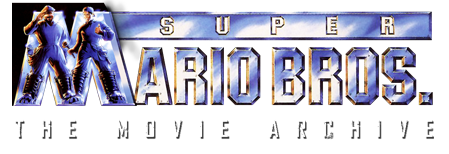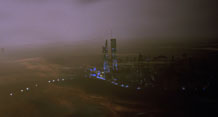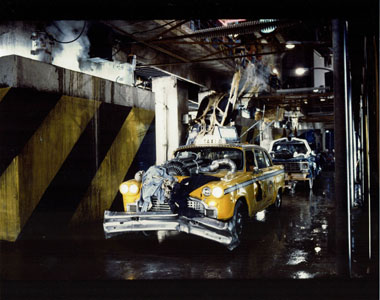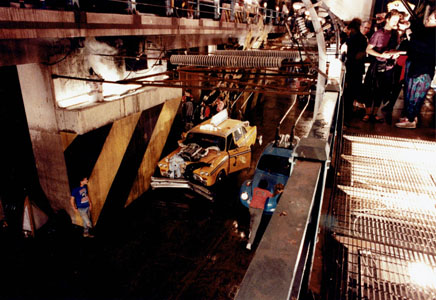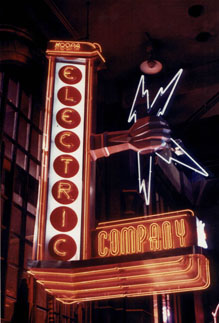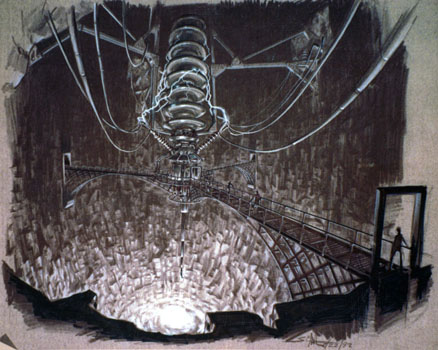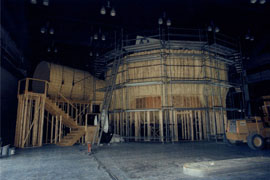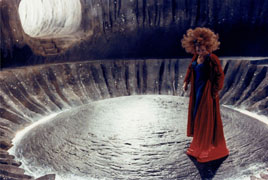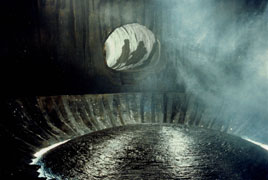Guest Editorial: Ecology in Super Mario Bros.
Author: Lindsay B.
September 21, 2018
Energy powers every aspect of civilization – it drives vehicles, heats and lights our homes, gives life to all of our electronic devices from smartphones to televisions to supercomputers. Much has been made of what we, as humans, are doing to Planet Earth in a quest for ever more energy, and where that might lead us as a civilization – and what happens when energy that we are used to being able to obtain in abundance becomes scarce? Or when the ecological cost of obtaining it becomes too great?
Super Mario Bros. is not a film one would particularly expect to explore themes like this, and yet, it does so, if in an oblique way. Confined to a few city blocks, with the rest of the planet being an “endless desert” (according to King Koopa, anyway), the ecological limits imposed on Dinohattan are much tighter, thus much more apparent, than they are on Earth.
These limits make themselves known immediately. Gasoline for cars? Not a chance, the cars in Dinohattan all run off an overhead power grid and (not terribly well-maintained) electric motors. As a matter of fact, almost everything in the film seems to be electrically powered in some way or another. Rather than guns, the police in the film use tasers, for instance – ammunition for regular weaponry apparently in short supply.
The Dinohattan vehicle grid
Curiously enough, there’s little to no visible signs of any power plants in the alternate universe, yet they clearly obtain power from somewhere. Early concept art of a “meteor chamber” which, while existing in the film is very cut down, lends a clue to the source of Dinohattan’s energy – the very meteorite which created the pocket universe itself is being tapped as a source of energy by a towering device, strewn with cabling. There are some interesting parallels to be drawn here.
As mentioned in the film, Dinohattan and regular Manhattan exist as alternate universes to one another. The former was created some sixty-five million years ago by a meteorite impact which split the timeline. Dinohattan’s inhabitants descend from the dinosaurs, while Manhattan’s descend from ape-like primates. Considering the very limited extent of Dinohattan versus regular Manhattan, it’s fair to conclude that Dinohattan is the smaller of the two, and is an offshoot of the main timeline, owing its existence to the meteorite itself.
The meteorite is a giver of life, of existence, to Dinohattan – and yet it’s being exploited for power in much the same way humans on Earth exploit our own planet. Though it didn’t make it into the final cut, thus this stray into the realm of conjecture, perhaps an original motivation for Koopa merging the dimensions was a chronic energy shortage? I have to assume that the meteorite’s power is not infinite – thus, drawing energy away from it gradually wears it down over time. Given what we see of the rest of the planet that Dinohattan sits upon, it may be that the weakening power of the meteor is why the city is as small as it is.
The habitable areas of the alternate universe could well have covered the entire planet at one point – but by exploiting the meteor over time, the ability of the land to sustain life gradually diminished, until all that remained, in Koopa’s own words, was “a few miserable streets and an endless desert.”
In light of the ecological crisis which is afflicting the Dinohattan universe, Koopa’s motives for invading our own universe become more understandable. One of his lines in the film makes it plain: “The humans on the other side have a world full of resources. Ready for the taking. Imagine: an endless supply of food, clean air, water.” Naturally, Koopa already has a monopoly on the city’s energy through the Koopa Electric Company – it’s not hard to imagine him desiring a similar level of ownership over Earth’s resources too.
Meteorite Chamber, exterior set build and scene lighting
Conquest in the name of resources? How many empires on Earth itself have acted in the same way? Overexploitation of resources leads to those resources becoming degraded. A possibility is that energy from the meteorite is sustainable – rather like the constant replenishing of uranium in Earth’s seawater – but that Koopa has been greedily taking too much energy from it, too fast, exacerbating the energy crisis in Dinohattan. In this case, the film’s ecological tones indicate the importance of proper stewardship of resources to ensure their sustainability for generations to come.
Koopa evidently doesn’t care at all for sustainability – his response to a shortage of resources isn’t more responsible use of what he does have, but rather an impulse to invade another, more plentiful realm, and exploit that for his own gain instead – those who already live there be damned.
It’s worth noting that there’s plenty in our own universe who are – who have been – willing to do the same. Perhaps they’d like to end up rulers of a few miserable streets and an endless desert too.
